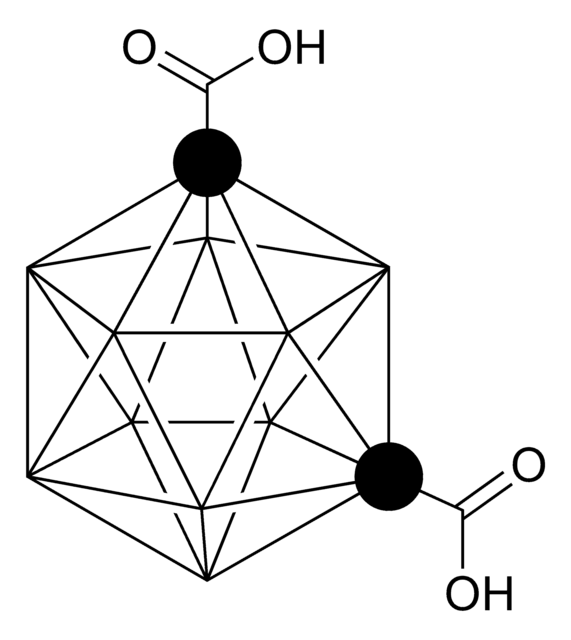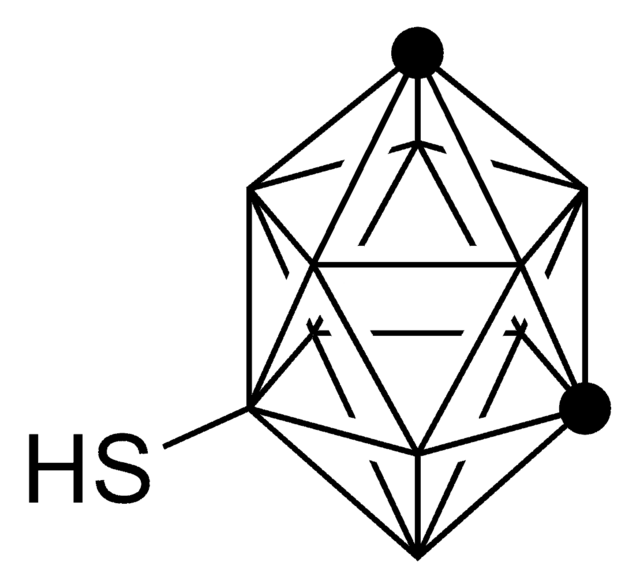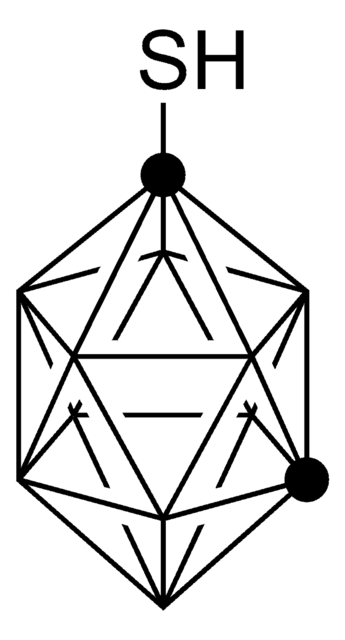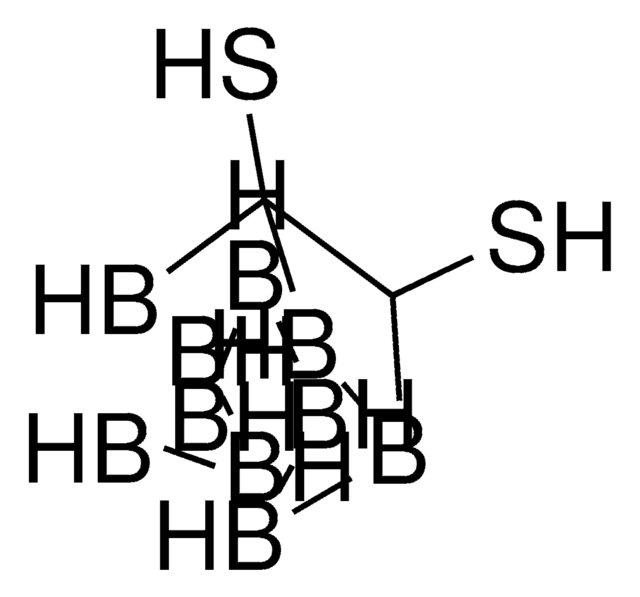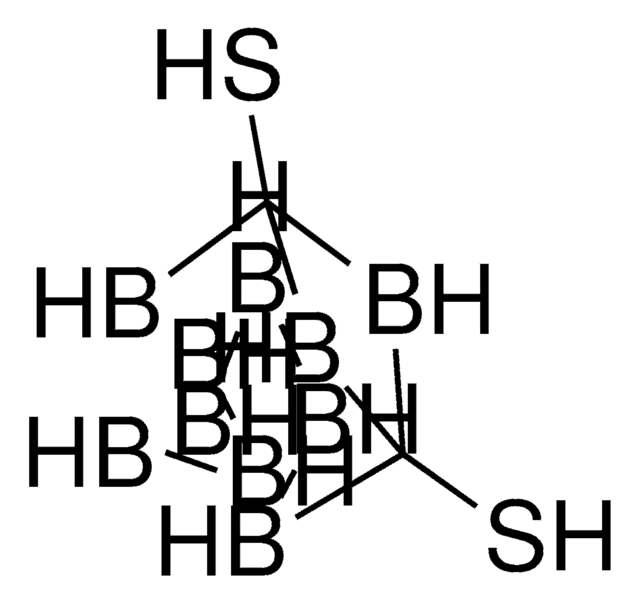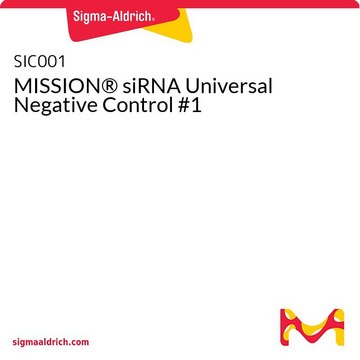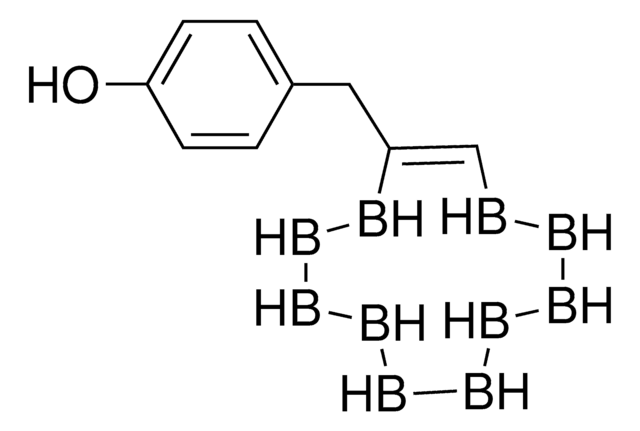288187
o-Carborane
98%
Synonym(s):
1,2-Dicarbadodecaborane(12)
Sign Into View Organizational & Contract Pricing
All Photos(1)
About This Item
Empirical Formula (Hill Notation):
C2H12B10
CAS Number:
Molecular Weight:
144.23
EC Number:
MDL number:
UNSPSC Code:
12352300
PubChem Substance ID:
NACRES:
NA.23
Recommended Products
Assay
98%
mp
260 °C (subl.) (lit.)
storage temp.
2-8°C
SMILES string
[bH]1[bH][bH][bH][bH][bH]cc[bH][bH][bH][bH]1
InChI
1S/C2H12B10/c1-2-4-6-8-10-12-11-9-7-5-3-1/h1-12H/b2-1-
InChI key
PWHTZDUTEHXWHV-UPHRSURJSA-N
Related Categories
General description
Electron deficient boron cage compounds with one or more carbon atoms as a ligand in the borane framework. The three common isomers are o-carborane, m-carborane and p-carborane 1The structure could be polyhedral or open cage.
Packaging
Packaged in glass bottles
Signal Word
Warning
Hazard Statements
Precautionary Statements
Hazard Classifications
Acute Tox. 4 Dermal - Acute Tox. 4 Inhalation - Acute Tox. 4 Oral
Storage Class Code
11 - Combustible Solids
WGK
WGK 3
Flash Point(F)
Not applicable
Flash Point(C)
Not applicable
Personal Protective Equipment
dust mask type N95 (US), Eyeshields, Gloves
Regulatory Information
新产品
Choose from one of the most recent versions:
Already Own This Product?
Find documentation for the products that you have recently purchased in the Document Library.
Yin-Ping Wang et al.
Chemistry (Weinheim an der Bergstrasse, Germany), 23(8), 1814-1819 (2016-11-30)
Palladium(II)-induced selective B(4)-H activation of an o-carboranylthioamide has been developed. A tetranuclear palladium(II) complex has been obtained in high yield with excellent regioselectivity. DFT calculations have confirmed that the B(4)-borometalate is lower in energy than the corresponding B(3)-borometalate. The product
Issei Takeuchi et al.
Colloids and surfaces. B, Biointerfaces, 159, 360-365 (2017-08-15)
Poly(DL-lactide-co-glycolide) (PLGA) has been widely used and studied because of its biocompatibility and biodegradability. Recently, the usefulness of nanoparticles using poly(L-lactide-co-glycolide) (PLLGA) having a higher glass transition temperature than PLGA was suggested. In this study, we investigated the availability of
Temidayo O B Olusanya et al.
Biophysical chemistry, 247, 25-33 (2019-02-24)
Based on the promise of liposomes as convenient vehicles for the transport of boronated agents for the boron neutron capture therapy (BCNT) of cancer, this paper reports a method for the formulation and characterisation of stable o-carborane-loaded liposomes (ca. 80-100 nm)
Our team of scientists has experience in all areas of research including Life Science, Material Science, Chemical Synthesis, Chromatography, Analytical and many others.
Contact Technical Service